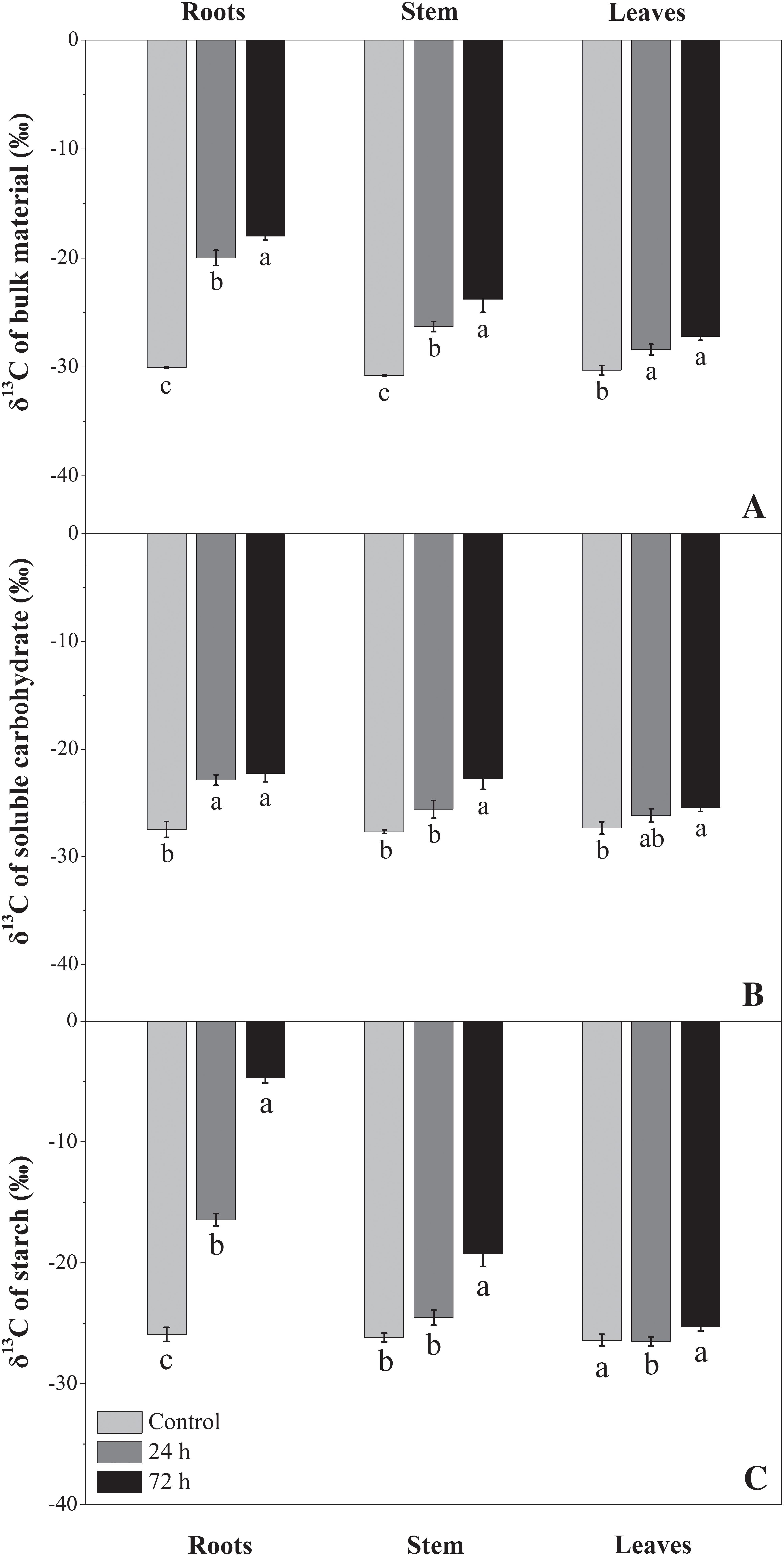When coping with the closure of foliar stomata in response to adversity, karst-adaptable plants often adopt "emergency exit" to solve the crisis from "no-load with substrate" in photosynthetic apparatus, which use bicarbonate from the uptake by the roots. Alternately utilizing carbon dioxide from the atmospheres and bicarbonate from the soil is an important mechanism for plants to adapt to karst adversity.
A research team led by Professor WU Yanyou from the Institute of Geochemistry, Chinese academy of Sciences (IGCAS), developed the technique of bidirectional isotope tracer culture to solve the quantitation of the proportion of bicarbonate utilization by plants. When subjected to osmotic stress, the utilization on the bicarbonate from rhizosphere by Camptotheca acuminata, a karst-adaptable plant, was found to reach a greater proportion (approximately 20%) (Photosynthesis Research).
To investigate whether the bicarbonate from rhizosphere makes contributions other than participating in photosynthesis, WU's team carried out a further study .
The scientists used 10% 13C (NaHCO3) as a substrate tracer to investigate the incorporation of newly fixed bicarbonate into the plant organs and its effect on the nonstructural carbohydrates (NSC) including photosynthetic products.
They found that NSC levels across the organs were all markedly increased within 24 h of labeling treatment and afterward only decreased in stems at 72 h. As time passed, the δ13C in NSC compounds was significantly affected by 13C labeling and was more positive in the roots than in the stem and leaves.
Moreover, starch was more 13C-enriched than soluble carbohydrate, and the δ13C of starch in roots was as high as -4.70‰,comparing with -25.81‰ in the control. It indicated that bicarbonate was quickly incorporated into newly formed NSC compounds, especially into starch.
Those data demonstrated that bicarbonate, acting as a C source, not only contributed slight amount of newly NSC to the photosynthetic organs but also stimulated the increase of NSC pools in various organs of plants.
The present study expands the understanding of the rapid response of NSC pools to bicarbonate in various organs of plants.
The study entitled “Bicarbonate stimulates nonstructural carbohydrate pools of Camptotheca acuminata” was published in Physiologia Plantarum, and it was supported by the National Natural Science Foundation of China (U1612441) and the National Key Research and development Program of China (2016YFC0502602).
|

|
|
δ13C of (a) bulk material, (b) soluble carbohydrate and (c) starch in different organs for the control, 24 h labeling and 72 h labeling in Camptotheca acuminata seedlings. (Image by IGCAS)
|
|

|
|
Schematic concept for the effect of bicarbonate supply on the NSC pools of C. acuminata. (Image by IGCAS)
|
Contact:
WU Yanyou
Institute of Geochemistry, Chinese Academy of Science
Email: wuyanyou@mail.gyig.ac.cn
(By Professor WU Yanyou’s group)